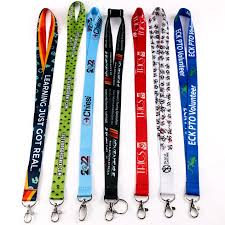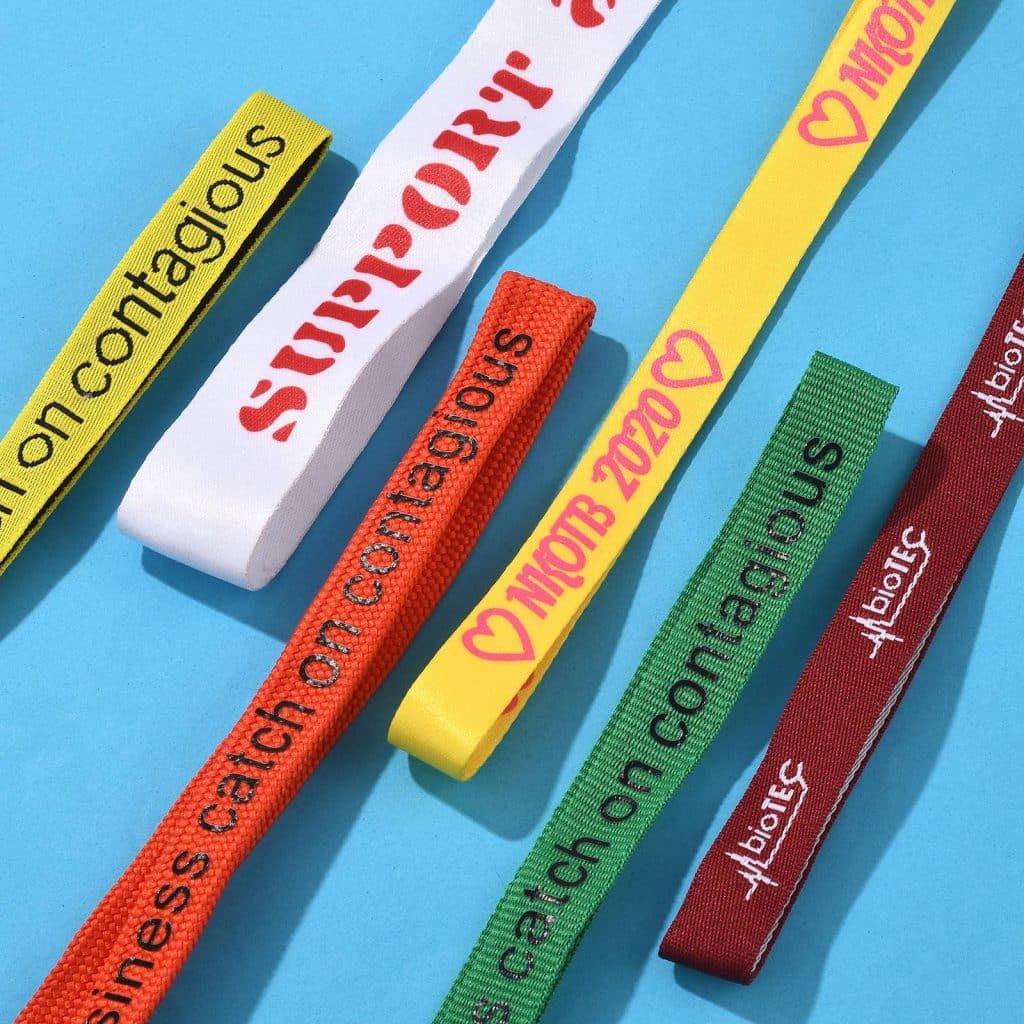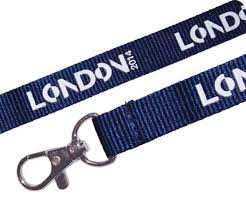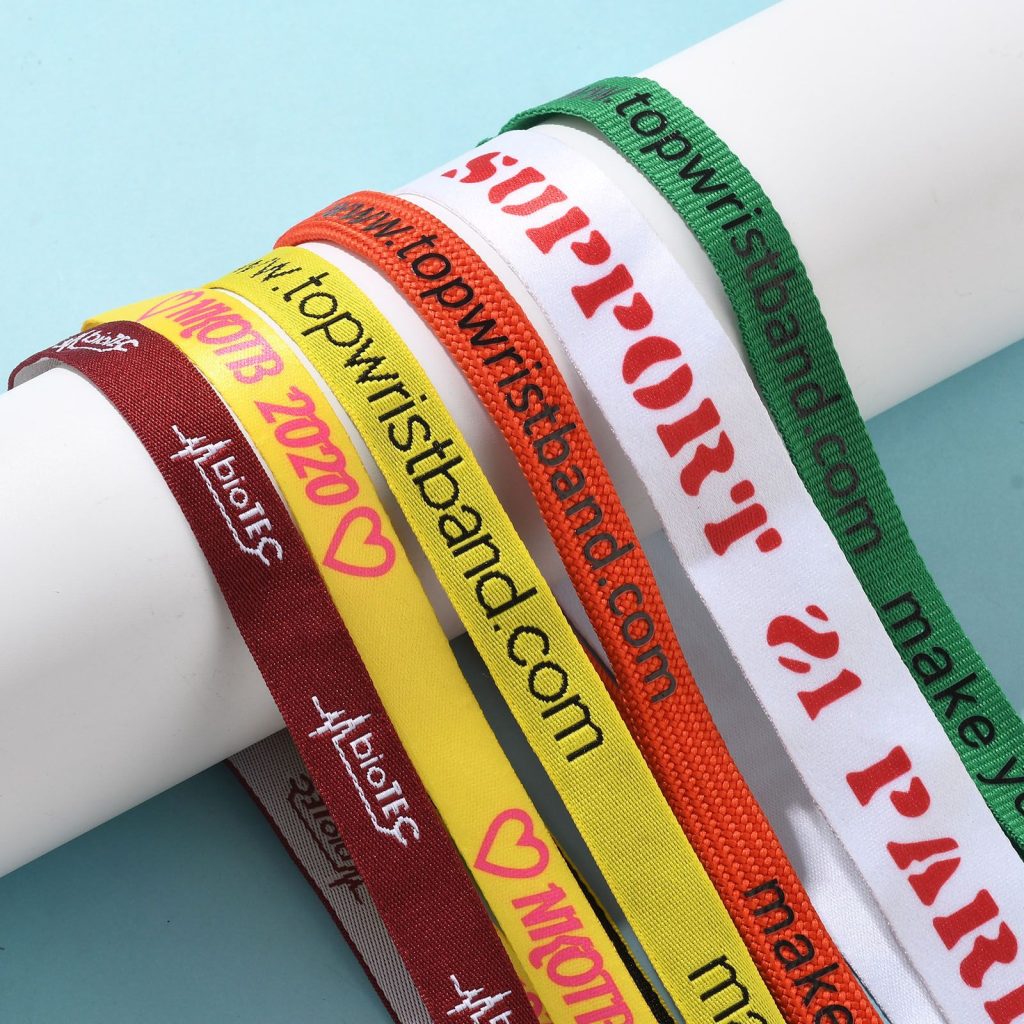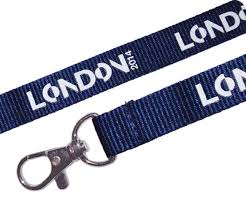Table of Contents
In Europe and America, lanyard are widely used as practical and promotional accessories in workplaces, events, exhibitions, and other settings. From employee identification tags hanging ropes to decorative hanging ropes carrying tickets for large music festivals, hanging ropes of different materials meet diverse needs. Among various materials, nylon lanyard stands out with its unique performance. This article will deeply compare the performance of nylon lanyards with common materials such as cotton, polyester, leather, and plastic, providing comprehensive reference for foreign trade customers in Europe and America when choosing lanyard materials.

Comparison of Material Characteristics
(1) Nylon lanyard
Nylon, scientific name polyamide fiber, is a synthetic fiber. It has the characteristics of high strength and high wear resistance, which are due to its tight molecular structure and good toughness. Nylon material has a smooth surface, soft and elastic feel, excellent dyeing performance, and can present rich and bright colors to meet different design needs. In addition, nylon also has a certain degree of waterproofing, which can maintain stable performance in humid environments and is not easily damaged by moisture erosion.
(2) Cotton lanyard
Cotton is a natural fiber made from cotton as raw material. Cotton lanyard has a soft and comfortable feel, good skin friendliness, and minimal irritation to the skin, making it suitable for long-term skin contact and wearing. However, cotton fibers have relatively low strength and poor wear resistance. Long term use or frequent friction can easily cause fuzzing, wear, and even breakage. Moreover, cotton ropes have strong water absorption and become heavy when exposed to water. They dry slowly and are prone to mold growth in humid environments.
(3) Polyester lanyard

Polyester is also a synthetic fiber, chemically known as polyethylene terephthalate. Polyester hanging ropes have high strength and wear resistance, second only to nylon, with good wrinkle resistance and shape retention, and are not easily deformed. But its hand feel is relatively hard, its softness is not as good as nylon and cotton, and its skin friendliness is also poor. In terms of dyeing, although polyester can present multiple colors, its color vividness and saturation are not as good as nylon.
(4) Leather lanyard
Leather lanyards are made from natural animal skin or synthetic leather as raw materials. Natural leather has a high-end texture, unique texture and luster, showcasing quality and personality, and is commonly used in high-end occasions or fashion accessories. However, leather lanyards are expensive and require special maintenance. They are afraid of water and sunlight, and are prone to deformation and hardening when exposed to water. Long term use can lead to aging and cracking. Although synthetic leather has a relatively low price, there is a gap in texture and durability compared to natural leather, and its environmental friendliness is often questioned.

(5) Plastic lanyard
Plastic hanging ropes are generally made of plastic materials such as polypropylene and polyethylene. It has low cost, is easy to process and shape, and can be made into various shapes and colors. However, plastic lanyards have low strength, hard and brittle texture, are prone to breakage, and have poor comfort, making them unsuitable for long-term wear. Meanwhile, the environmental friendliness of plastic hanging ropes is poor, and they are difficult to degrade after disposal, causing significant pressure on the environment.
Durability comparison
(1) Nylon lanyard
In terms of durability, nylon lanyards perform well. The high-strength characteristics enable it to withstand large tensile forces without breaking. In daily use, even when heavy items such as large-sized work permits and tools are mounted, they are not easily damaged. Its high wear resistance allows it to maintain surface integrity even under frequent friction, reducing pilling and wear phenomena.
Experiments have shown that under the same conditions, the service life of nylon ropes is 3-5 times longer than cotton ropes and 4-6 times longer than plastic ropes. In addition, nylon has good anti-aging performance. Under normal use and storage conditions, it can maintain good physical properties for a long time, and is not easy to become brittle and hard with time.
(2) Cotton lanyard
The durability of cotton lanyards is poor. Due to the limited strength of cotton fibers, fiber breakage and fuzzing are prone to occur when subjected to high tensile forces or frequent friction. For example, in crowded places such as exhibitions where hanging ropes are frequently used, cotton hanging ropes may wear out in a short period of time, affecting their appearance and usability. Moreover, in humid environments, the fibers of cotton ropes become fragile due to water absorption and expansion, further reducing their strength and durability.
(3) Polyester lanyard
Polyester hanging ropes have high strength and wear resistance, and their durability is better than cotton hanging ropes and plastic hanging ropes. However, compared with nylon ropes, polyester ropes will gradually decrease in wrinkle resistance and shape retention after long-term use, especially after multiple washes or exposure to sunlight, resulting in deformation and hardening, which affects the user experience and appearance.
(4) Leather lanyard
Although natural leather lanyards have a high-end texture, their durability is greatly affected by environmental factors. As mentioned earlier, leather is sensitive to water and sunlight, and is prone to mold and deformation in humid environments. It also accelerates aging and cracking under direct sunlight. Even with careful maintenance, the service life of leather lanyards is relatively limited, and their appearance and performance will gradually decline over time. Although artificial leather lanyards have improved maintenance difficulty to some extent, their durability is still not comparable to nylon lanyards.
(5) Plastic lanyard
Plastic lanyards have the worst durability. Its texture is hard and brittle, lacking toughness, and is prone to fracture when subjected to slight external forces such as pulling or collision. Moreover, plastic hanging ropes are prone to generate static electricity due to friction during use, which can absorb dust and impurities, affecting their appearance and effectiveness. In addition, plastic hanging ropes may also deform and melt in high temperature environments, and their applicability is very limited.
Comfort comparison
(1) Nylon lanyard
Nylon lanyard has a soft and elastic feel, with a lightweight texture that does not cause excessive burden on the neck or wrist when worn. Its surface is smooth and does not rub against the skin, ensuring comfort even when worn for a long time. In addition, the elasticity of the nylon lanyard allows it to adapt to different wearing postures and activities, without feeling constrained by body movements. In terms of design, nylon lanyards can also be paired with various soft cushioning accessories, such as silicone pads, velvet covers, etc., to further enhance wearing comfort.
(2) Cotton lanyard
The skin friendly nature of cotton lanyard is one of its major advantages. The soft material feels comfortable when in contact with the skin, especially suitable for people who are sensitive to the skin. However, due to the strong water absorption of cotton, in environments with excessive sweating or humidity, cotton ropes can absorb a large amount of moisture and become damp, heavy, and tightly attached to the skin. This not only affects comfort, but also easily breeds bacteria, causing skin discomfort.
(3) Polyester lanyard
Polyester lanyards have a hard feel and insufficient softness, and prolonged use may cause friction and discomfort to the skin. Especially during the summer when there is a lot of sweating, polyester has poor breathability, which can easily lead to stuffy and non breathable skin, increasing the risk of skin allergies.
(4) Leather lanyard
Natural leather lanyards may feel comfortable when first worn, but over time, the leather will gradually lose its softness, become stiff, and exert pressure on the skin. Moreover, the weight of leather lanyards is relatively large, and wearing them for a long time can put a certain burden on the neck or wrist. The comfort of artificial leather lanyards is worse, as their material often lacks the softness and breathability of natural leather, resulting in a poor wearing experience
(5) Plastic lanyard
Plastic lanyards have a hard texture and lack elasticity, which can cause a noticeable foreign object sensation when worn. Prolonged contact with the skin can easily lead to compression and discomfort. Meanwhile, plastic lanyards are not breathable and cannot regulate the temperature and humidity of the skin surface. Using them in hot weather can make people feel stuffy and unbearable.
Comparison of Environmental Protection
(1) Nylon lanyard
With the increasing awareness of environmental protection, nylon hanging ropes have also made new developments in environmental protection. At present, there are ropes made of recycled nylon materials on the market, which are sourced from recycled waste plastic bottles, fishing nets, etc. These waste materials are converted into nylon fibers through special processing techniques, greatly reducing dependence on non renewable resources such as oil and reducing carbon emissions. Moreover, the performance of recycled nylon ropes is basically the same as that of traditional nylon ropes, with high strength, high wear resistance and other characteristics. However, traditional nylon ropes degrade slowly in natural environments and take hundreds of years.
(2) Cotton lanyard
Cotton is a natural fiber that can be completely degraded in the natural environment and will not cause long-term pollution to the environment. Moreover, in the process of cotton cultivation, if organic planting methods are used without the use of pesticides and fertilizers, it can also reduce pollution to soil and water sources, and has high environmental value. But cotton cultivation requires a large amount of water resources, and in areas with water scarcity, large-scale cotton cultivation may put pressure on the ecological environment.
(3) Polyester lanyard
Polyester lanyards, similar to nylon lanyards, are synthetic fibers that are difficult to degrade in natural environments. After being discarded, they will persist in the environment for a long time, causing white pollution. Although there is currently research and development of biodegradable polyester, there are still certain limitations in terms of performance and cost, and it has not been widely applied.
(4) Leather lanyard
The production process of natural leather ropes involves animal husbandry and leather processing, which consumes a large amount of resources, and the chemicals such as tanning agents used in the processing may cause environmental pollution. Although artificial leather ropes do not involve animal husbandry, a large amount of chemical raw materials are also used in the production process, and they are also difficult to degrade after being discarded, resulting in poor environmental protection.
(5) Plastic lanyard
The environmental issue of plastic hanging ropes is the most prominent. Plastic degrades very slowly in the natural environment, taking hundreds or even thousands of years. A large amount of discarded plastic ropes can cause serious damage to soil, water bodies, and ecosystems. In addition, the production process of plastic lanyards also consumes a large amount of fossil energy and generates greenhouse gas emissions.
5、 Cost and cost-effectiveness comparison
(1) Nylon lanyard
The cost of nylon lanyards is relatively moderate. Although its price is higher than cotton and plastic ropes, considering its excellent performance and longer service life, nylon ropes have a high cost-effectiveness. In the European and American markets, companies and organizations not only focus on the initial procurement cost when choosing ropes, but also pay attention to the comprehensive usage cost of the product. Nylon lanyards, due to their strong durability, reduce the cost and hassle of frequent replacement, and in the long run, can save users costs. In addition, with the development and application of recycled nylon technology, the cost of recycled nylon ropes is gradually decreasing, further improving the cost-effectiveness of nylon ropes.
(2) Cotton lanyard
The raw material cost of cotton hanging rope is relatively low, so the product price is relatively cheap. However, due to its poor durability and frequent replacement, the overall cost of use is not low. Moreover, the poor performance of cotton hanging ropes in some special environments limits their application range, and their cost-effectiveness advantage is not obvious.
(3) Polyester lanyard
The price of polyester lanyard is similar to nylon lanyard, but its performance is slightly inferior. Although polyester lanyards have certain strength and wear resistance, they are inferior to nylon lanyards in terms of comfort, dyeing effect, and long-term stability. Therefore, in terms of overall cost-effectiveness, nylon hanging ropes have more advantages.
(4) Leather lanyard
Leather lanyards, especially natural leather lanyards, are relatively expensive and mainly used in the high-end market. Its cost not only includes the cost of raw materials, but also encompasses complex processing techniques and maintenance costs. Due to the limited durability and applicability of leather lanyards, their cost-effectiveness is not high for most ordinary users and daily use scenarios. Although the price of artificial leather lanyards is lower, there is a gap in quality and performance compared to natural leather, and it is also difficult to compete with the cost-effectiveness of nylon lanyards.
(5) Plastic lanyard
Plastic lanyards have the lowest cost among all materials and are affordable in price. However, due to its poor performance and short service life, it can only meet some temporary use scenarios with extremely low requirements for hanging ropes. After considering the comprehensive cost and actual effectiveness, the cost-effectiveness of plastic hanging ropes is not high.
6、 Conclusion
By comprehensively comparing and analyzing the material characteristics, durability, comfort, environmental friendliness, cost and cost-effectiveness of nylon lanyards with common materials such as cotton, polyester, leather, plastic, etc., it can be seen that nylon lanyards have significant advantages in comprehensive performance.
It combines high strength, high wear resistance, good comfort, and dyeing performance, far exceeding materials such as cotton and plastic in terms of durability. It also has new development directions in environmental protection and has a high cost-effectiveness. For foreign trade customers in Europe and America, nylon lanyards are an ideal choice for hanging employee badges, event tickets, or as promotional gift lanyards. In the current emphasis on quality, performance, and sustainable development, nylon lanyards can meet diverse needs, bringing users a high-quality user experience and long-term value.








